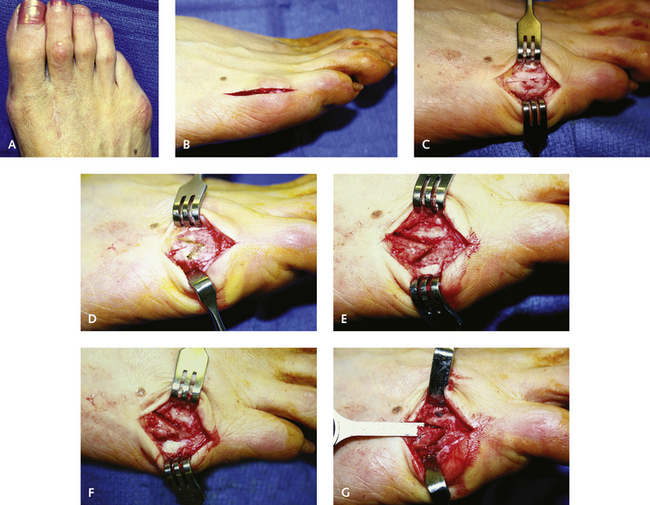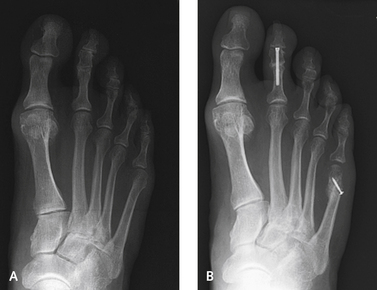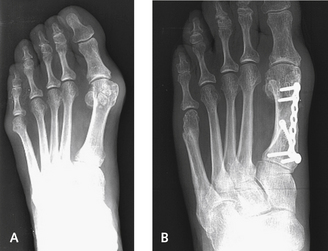CHAPTER 13 Management of the Bunionette
CHEVRON OSTEOTOMY
For deformity that involves a curvature of the distal metatarsal with a slightly widened intermetatarsal angle, a chevron osteotomy or one with simple translation at the neck of the metatarsal is easy to perform. With more intermetatarsal deformity, however, a proximal oblique metatarsal osteotomy is preferred. For either procedure, fixation of the metatarsal is neccessary. An interesting observation is the prolonged period required for complete radiographic healing of the osteotomy; despite the initial radiographic appearance, however, bone healing invariably occurs, and nonunion of the distal metatarsal osteotomy is rare. The fixation can be performed using a small twist-off screw, a buried or percutaneously introduced Kirschner wire (K-wire), or a bioresorbable pin. The chevron cut made in the fifth metatarsal head is technically no different from that made in the first metatarsal head for correction of a hallux valgus and bunion. For maximum bone-to-bone position, I try to ensure that the angle of the cut is no less than 60 degrees. With a smaller-angle cut, more cortical and less metaphyseal bone contact results, contributing to the risk for instability (Figures 13-1 to 13-3).












